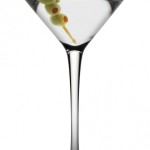I'm home and working on my Mac laptop, so I can add a few links and photos to this post. Let's start with a New York Times article dated May 11, 2012 that caused a huge flap. Ian Urbina, a senior NYT reporter is no stranger to controversy, but his article titled, "Addiction Diagnoses May Rise Under Guideline Changes," prompted an unusually strong response from the American Psychiatric Association (APA), the group responsible for revisions to DSM.
Urbina interviewed a number of senior figures in the field and wrote that the new version by expanding the list of associated symptoms in alcohol and drug addiction, adding a new "gambling addiction" diagnosis, and possibly even pasting in an NOS (not otherwise specified) category for "behavioral addiction," could add as many as 20 to 30 million people to those fitting under DSM's umbrella of illnesses.
He quoted Dr. James H. Scully, Jr. the APA's Chief Executive Officer and Medical Director at American Psychiatric Association, as saying "The biggest problem in all of psychiatry is untreated illness and that has huge social (sic) costs."
Others with considerable stature in the mental health (MH) field had qualms. Dr. Allen Frances, head of the DSM-IV revision team, stated , "We'll see false epidemics and medicalization of everyday behavior". Researchers in Australia estimated 60% more people would be considered alcohol addicted under DSM-5's definitions, while a health writer at TIME.com said the new manual could lead to 40% of college students being called alcoholics.
The APA responded with a bit by bit rebuttal of Urbina's article. They noted that DSM-5's terminology would be "substance abuse disorder," not addiction and expected early intervention could stop progression of the problems and therefore benefit society. The diagnosis itself would require more symptoms than in DSM-IV and those would have to produce clinically significant issues. They denied there would be a new NOS behavioral category other than gambling disorder and noted prior DSM versions had a variant of that diagnosis.
Referring back to the 2004 publication of the NESARC study (the National Epidemiologic Survey on Alcohol and Related Conditions) headed by NIH's Dr. Bridget Grant, PhD, PhD (she has a double PhD in psychology and epidemiology), the APA's Work Group noted their recent analysis of her 43,000-subject project showed no significant change in prevalence. The APA feels it is our healthcare system, not our diagnostic criteria, that determines access to care. The new criteria would include gradations from mild to severe and their take is that this, not the distinction between abuse and dependence, is what is most crucial in improving both prevent and treatment. The APA feels the proposed new health legislation, not the changes to be seen in DSM-5, would expand quantity and quality of therapy.
Others have noted, however, that the APA makes ~$5 million a year from publishing the DSM and APA individual members could profit considerably from the increased number of patients the new guidelines could bring to their practices.
The July 27, 2012 edition of Psychiatric Times had an article on "Substance Abuse in Aging and Elderly Adults." This arena is often overlooked or forgotten, but as of 2009 the "elderly" made up nearly 13% of the US population and a quarter of all prescription drugs sold in this country go to that group. When data from a 2009 National Survey on Drug Use and Health performed by SAMHSA, the Substance Abuse and Mental Health Services Administration, were examined, there were marked increases in illicit drug use in older adults. For those over 50, alcohol is the most common substance abused, but opiates were the second ,while anti-anxiety drugs and skeletal muscle relaxants were also on the commonly misused list.
The bottom line, I think, is that substance abuse is common, seen at all ages from youth to the elderly, and a significant problem in this country. There is considerable debate, even among experts in the field as to what criteria should be applied in diagnosing this problem and Dr, Allen's comments on the APA's role in crafting DSM should be taken seriously.



